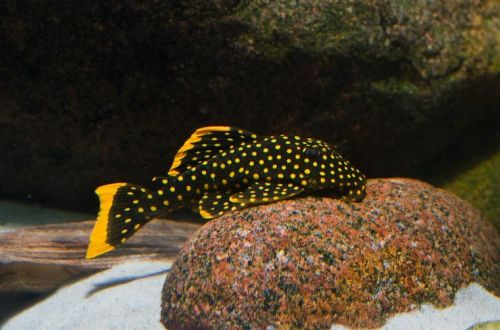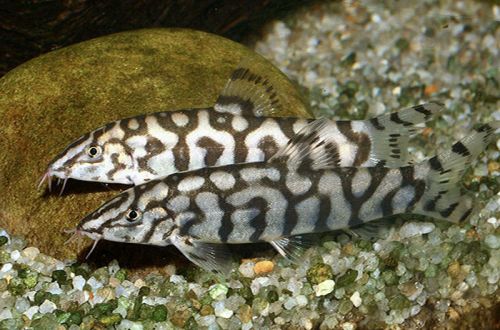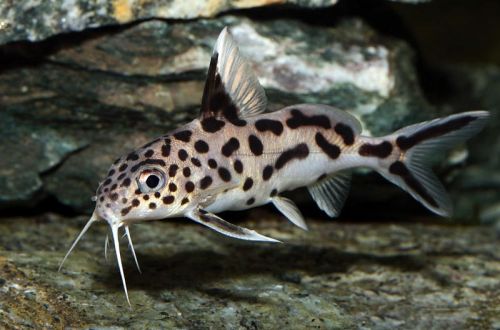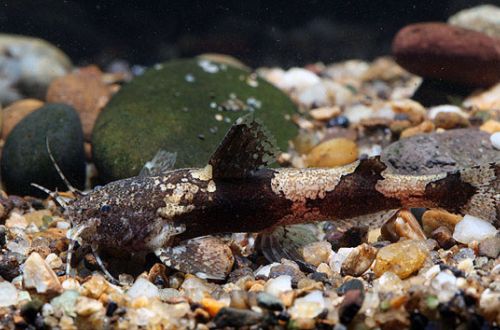
Yellow Dot Pleco
Yellow-spotted Pleco or Plecostomus “Golden Nugget”, scientific name Baryancistrus xanthellus, belongs to the family Loricariidae (Mail catfish). Due to the bright spotted body pattern, these catfish are very popular in the aquarium hobby. However, before acquiring them, it is worth considering the peculiarities of behavior, a quarrelsome disposition can cause problems for other fish.

Contents
Habitat
It comes from South America from the territory of the Brazilian state of Para. It occurs in a small area of the Xingu River basin (right tributary of the Amazon) from the confluence with the Iridi to the reservoir formed by the Belo Monte hydroelectric power plant. Juveniles prefer shallow water, gathering in groups. Adults are solitary, preferring mainstream rivers with rocky substrates.
Brief information:
- The volume of the aquarium – from 250 liters.
- Temperature – 27-32°C
- Value pH — 6.0–8.0
- Water hardness – 3–15 dGH
- Substrate type – sandy or rocky
- Lighting – any
- Brackish water – no
- Water movement – moderate or strong
- The size of the fish is up to 22 cm.
- Nutrition – foods with a high content of plant components
- Temperament – inhospitable
- Content alone or in a group
Description
Adults reach a length of up to 22 cm. The fish has a somewhat flattened body and large fins. The scales are modified into hard plates with a rough surface due to multi-membered spines. The first rays of the fins are thickened, turning into sharp spikes. All this “armor” is necessary as a means of protection against numerous predators. The coloration is bright – the black body is dotted with contrasting yellow dots, the edge of the tail and dorsal fin is painted in the same color. Sexual dimorphism is weakly expressed, there are no obvious visible differences between male and female.
Food
In nature, catfish feed on diatoms and filamentous algae, scraping them from the surface of stones and snags. Together with them comes across a number of invertebrates. In a home aquarium, the diet should be appropriate. It is recommended to use food with a large amount of plant components, as well as place pieces of green vegetables and fruits on the bottom. It will not be superfluous to regularly supply live or frozen bloodworms, brine shrimp.
Maintenance and care, arrangement of the aquarium
The optimal size of the aquarium for one or two catfish starts from 250 liters. In the design, an environment is formed that resembles the bottom of a river with rocky or sandy substrates with several large boulders and snags. If desired, you can place live plants that can grow on any surface, for example, Anubias, Bolbitis, Microsorum pterygoid and the like. Ground-rooted plants are not desirable as they will be uprooted shortly after planting.
When keeping Yellow Dot Pleco, it is important to ensure high water quality within the acceptable range of temperatures and hydrochemical values, as well as a sufficient level of dissolved oxygen. Such conditions are achieved through regular aquarium maintenance procedures (replacing water with fresh water, removing organic waste, etc.) and installing the necessary equipment, primarily a filtration and aeration system.
Behavior and Compatibility
Young fish have a peaceful disposition and are often found in large groups, but their behavior changes markedly with age. Adult catfish, especially males, begin to show aggression towards any fish, including relatives, that will be on their territory. As neighbors in an aquarium, species that live in the water column or near the surface can be considered. Bottom dwellers should be excluded in small tanks. Accordingly, if the area allows, then more than two Plecostomuses will be able to get along together.
Breeding / breeding
Breeding is complicated by the fact that catfish outside the mating season are not very friendly towards each other, and there are also problems with gender identification. Thus, in order to guarantee the formation of at least one pair, one has to acquire several catfish, in the hope that at least one male / female will fall among them. In turn, a group of several adult fish will need a spacious aquarium.
With the onset of the mating season, males begin active courtship, inviting females to their site at the bottom. When the female is ready, they form a temporary pair and lay several dozen eggs. Then the female swims away. The male stays to protect the clutch until the fry appear and begin to swim freely.
Fish diseases
The cause of most diseases is unsuitable conditions of detention. A stable habitat will be the key to successful keeping. In the event of symptoms of the disease, first of all, the quality of the water should be checked and, if deviations are found, measures should be taken to correct the situation. If symptoms persist or even worsen, medical treatment will be required. Read more about symptoms and treatments in the Aquarium Fish Diseases section.





